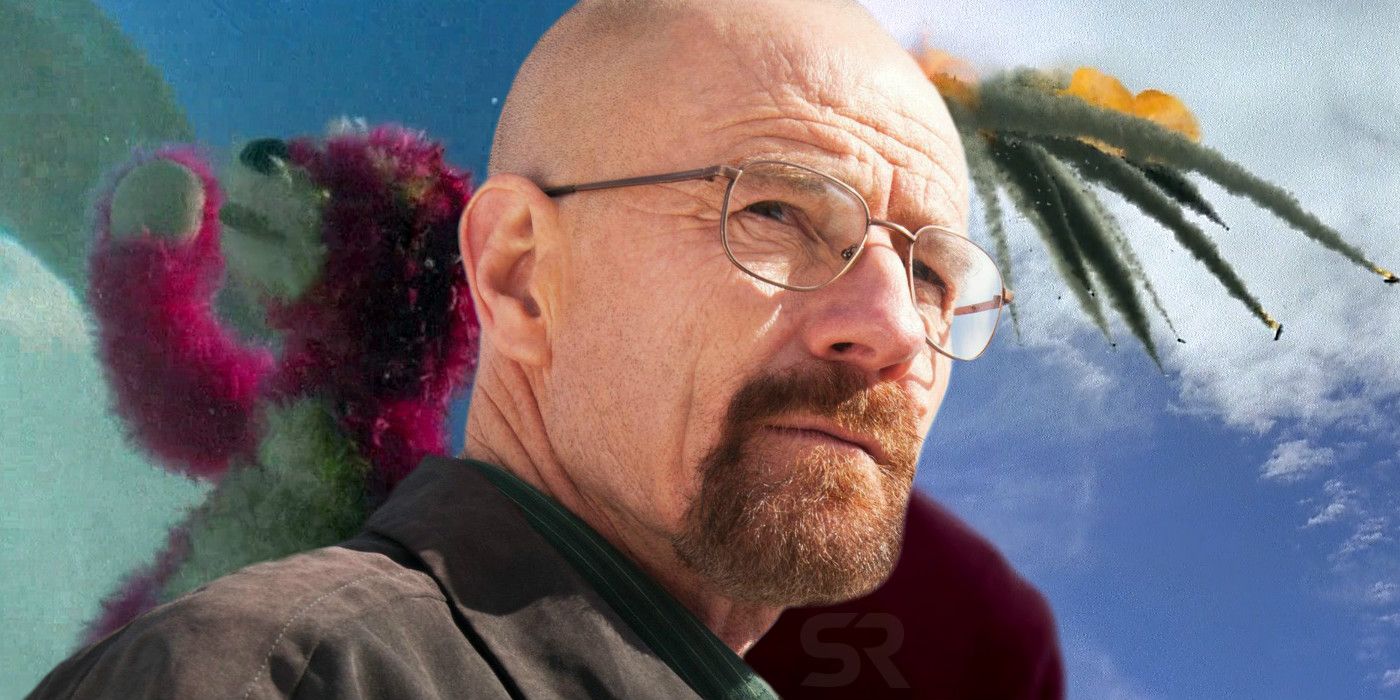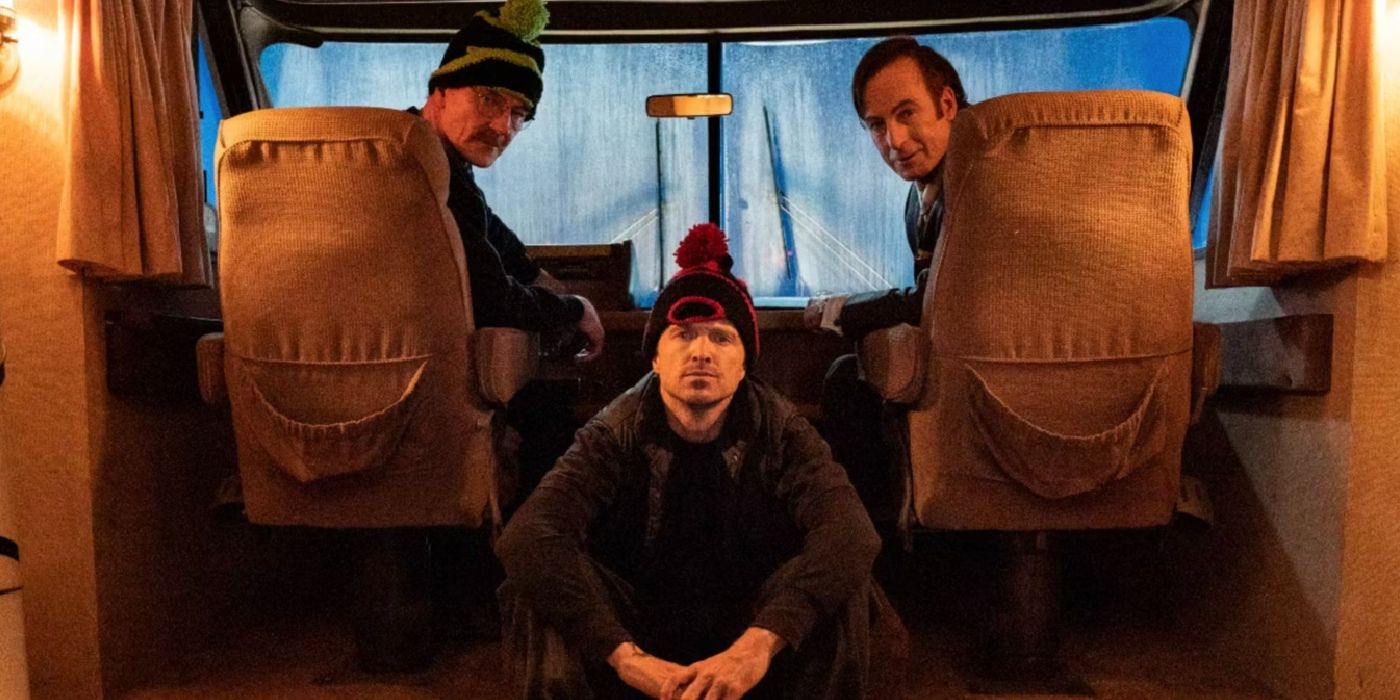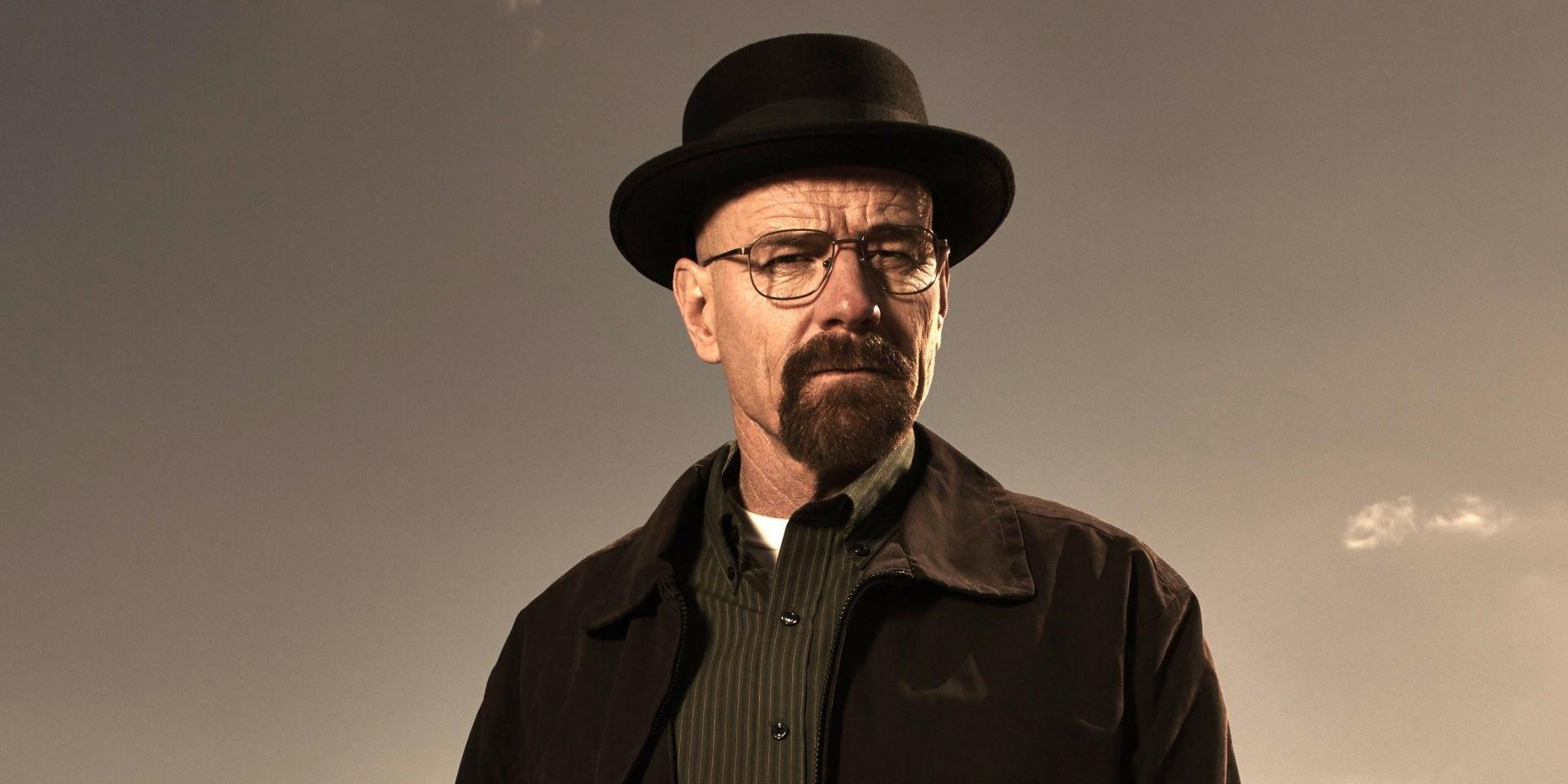A real event did inspire the infamous Breaking Bad plane crash, but the season 2 plane collision isn't as true-to-life as some fans believe. In Breaking Bad season 2, episode 13, "ABQ" - the season finale - two airplanes collided above Walter White's (Bryan Cranston) house and resulted in debris, like a pink bear, landing in his property. The crash was foreshadowed through season 2 — in the first, fourth, and tenth episodes — before being shown in the season finale. Bizarrely, there are stark similarities between the Breaking Bad plane crash and a real-life disaster — the 1986 Cerritos Midair Collision.
In Breaking Bad, the plane crash saw a 737 commercial airliner collide with a chartered plane over Albuquerque, New Mexico, killing all 167 passengers. The blame was placed on the air traffic controller — the father of Jane Margolis (Krysten Ritter), who recently died after Walter didn't save her from choking on her own vomit. This means that Walt is partially responsible for the Breaking Bad plane crash — but it turns out he isn't the first Walter White to cause such a tragedy. On August 31, 1986, two planes clipped each other in the Cerritos Midair Collision. Among those responsible for this real-world crash includes an air traffic controller named Walter R. White.
The Plane Crash Is Symbolic
It has not been confirmed that Breaking Bad creator Vince Gilligan knew of this event and used it as inspiration for the show's plane crash. Instead, it has been interpreted that this crash is meant to visualize all the pain and grief that Walt has already caused at that point in the Breaking Bad timeline. In that way, the plane crash is effective and still managed to surprise many during season 2 despite the multiple pieces of foreshadowing that the season entailed. Notably, in addition to the flash-forwards about the Breaking Bad plane crash in season 2, the episodes that they appeared in spelled out the traumatic event and read "Seven Thirty-Seven Down Over ABQ" when combined.
Since audiences don't know for sure whether the real event inspired Breaking Bad's crash, fans will have to make up their own minds on the matter. There are so many similarities between the events, though, with the biggest obviously being the real-life air traffic controller sharing the name Walter White. That said, whether this is a big coincidence or intentional, it doesn't change the impact of the event. If Breaking Bad's plane crash wasn't inspired by this event, then it is one giant coincidence.
The Breaking Bad Plane Crash Coincidences Explained
Though the Breaking Bad plane crash was simply meant to highlight Walter White's transformation into Heisenberg, it does have certain freaky similarities with real life. That said, these coincidences can also be reasonably explained by certain facts. For instance, Walter White isn't actually that uncommon of a name. There are over a thousand people currently named Walter White in the U.S., and the name was even more common in the recent past. "Walter White" was a very popular name from the '40s to the '60s, and White isn't an uncommon surname at all, even before Breaking Bad popularized the generic name.
Moreover, domestic plane crashes in the U.S. are surprisingly common, and were more so in the earlier decades of air travel. Yes, it is freaky that a real air traffic controller named Walter R. White was responsible for a plane crash in Albuquerque, and that a key point in Walt and Jesse Pinkman's relationship was built around a highly similar fictional crash. However, the fact is that pretty much every state in the U.S. have experienced their own plane crash disaster. Most plane crashes are also caused by human error, so this aspect of the Breaking Bad plane crash isn't as idiosyncratic as first seems.
Finally, Breaking Bad protagonist Walter White was named deliberately for reasons that had nothing to do with the plane crash. According to Breaking Bad creator Vince Gilligan (via Cheatsheet), "Walter White’ appealed to me because of the alliterative sound of it and because it’s strangely bland, yet sticks in your head nonetheless.” This isn't surprising, considering how common the name was for Gilligan's generation. While there aren't many young Walter Whites in 2022, this wasn't the case in 1986. Considering how Walt has become one of the greatest antiheroes in modern television, it's hard to say which way the Walter White name trend will swing in the future.
Real Or Not, The Breaking Bad Plane Crash Was Genius Storytelling
Everything that led to the Breaking Bad airplane crash underscores how Vince Gilligan and his crew changed symbolism and foreshadowing in the crime and antihero genre in the late 2000s. Not only do the episode names with the teasers spell out "Seven Thirty-Seven Down Over ABQ," Walt also notably calculated the amount he would need to leave his family at $737,000. "We came up with the number $737,000 dollars, then we reverse-engineered the math," said Gilligan (via NJ.com) "And then the next episode where you have the same black and white teaser, it was called "Down."
From there, Gilligan and the writers "worked very hard to give (episodes) proper dual meanings. So "Over" was over, and in "Down," Jesse was down and out, that's the one where he fell through the blue stuff in the toilet." Ultimately, it gave Gilligan the "giant moment of showmanship" he wanted for the finale. Apart from the sheer spectacle of a "rain of fire coming down... like the judgment of God" over Walt, Gilligan also explained how the Breaking Bad plane crash summed up Walt's character development at that time in the show.
In that moment, at the end of season two, he doesn't realize it, but he's responsible for the whole world figuratively coming to an end around him. It's not deus ex machina, there's another term we were talking about, Lucifer ex machina, "Devil from the machine" -- it's the opposite. It almost could feel kind of random, but it's not. It's a butterfly effect. All these gears have been turning, this particular outcome was stuff Walt put into motion a long time ago by choosing to cook crystal meth.



